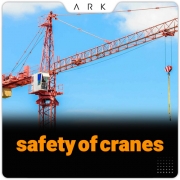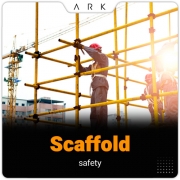Close
Hazards That Threaten People's Lives in the Workplace P2
Increasing occupational safety and health is one of the most important policies of any country to reduce the damage caused by accidents and occupational diseases to employers and society. How can these staggering costs be avoided? The answer is simple, identify hazards, and follow workplace safety rules. In this article, we are going to introduce the remainder of the 10 important hazards that people face in their workplaces.
6- Biological hazards
Another danger that can cause harm to people in the workplace is biological factors. People are usually exposed to these factors due to working conditions, type of activity, consumption of various substances. These factors fall into five general categories: Viruses, Bacteria, Rickettsia, Fungi, and Parasites. These factors can greatly affect the work environment. Before the outbreak of coronavirus in 2020, these factors were not given much attention in the workplace. This has caused many industries to face serious problems and shutdowns. The outbreak of this virus showed that organizations and industries should prepare themselves for such crises. Changing the way things are done can be very effective in controlling such diseases. Carrying out activities remotely, performing engineering measures (such as improving ventilation systems), training, and employing specialized personnel in the field of health can be very effective in controlling these factors.

7- Chemical hazards
Chemicals in the workplace are generally materials in the form of gas, liquid, or solid. Chemicals include all raw materials, intermediate materials, and supplementary materials in the production process. These substances can have different physiological effects on humans. Generally, they are divided into several categories, including 1- Inflammatory and stimulant substances 2- Suffocating substances 3- Anesthetics and narcotics 4- Systemic toxins 5- Other suspended substances.
In addition to their physiological effects on humans, chemicals can be the source of many other accidents, such as fires and explosions in the workplace. It is required that MSDS of all chemicals should be available in the workplace.
8- Ergonomic hazards
Ergonomics is the science of human interaction with the environment and various tools. Ergonomics is closely related to the safety and health of employees in the workplace. Ergonomics is a science that designs work environments, tools, and tasks to match the physiological, psychological, anatomical, and abilities of individuals. In short, ergonomics is the science of adapting the work environment to the abilities of workers and preventing disease, injury, and stress in people. Poor ergonomic design can lead to muscle strain and skeletal and muscular injuries. Therefore, it is recommended that employers use ergonomic knowledge in designing tools and workstations, as well as in planning work shifts to minimize injuries to people.

9- Physically harmful factors in the workplace
Physical factors in the workplace are divided into different categories. These factors include noise, vibration, heat, cold, poor lighting, and radiation in the workplace. In addition to having a direct impact on people`s health, these factors can be a secondary cause of many other diseases and injuries in the workplace. For example, loud noise in addition to hearing damage, physiological and psychological effects can cause accidents in the workplace. The important thing about these factors is the personal expertise and ability of individuals. Susceptible individuals can be harmed much sooner in inappropriate environments.
10- Lack of visual and audio equipment
Failure to use warning devices can be considered a hazard in the workplace. Unfortunately, many workplaces do not have warning devices. Signs, stickers, hangers, and other safety signs in the workplace visually remind people of the dangers. Proper use of these tools can prevent accidents in the workplace. Also in case of emergency, these are the tools that show the emergency exit for people and inform them of the occurrence of an emergency.

Just take the first step ...

 Military Shoe
Military Shoe
 Safety Shoe
Safety Shoe
 Work Wear
Work Wear
 Office Shoe
Office Shoe
 Hiking Shoe
Hiking Shoe












